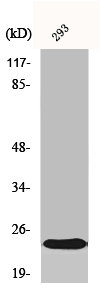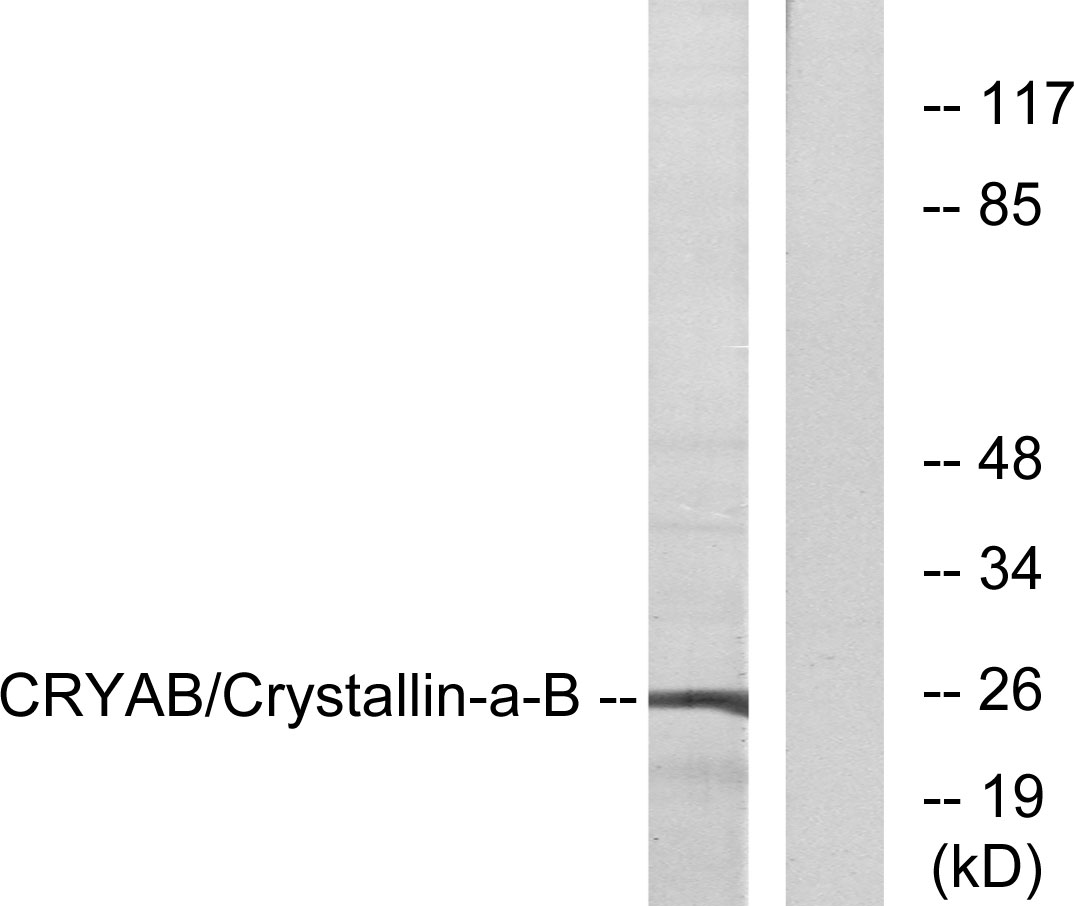Alpha B Crystallin Antibody (OASE00098)
OASE00098
ApplicationsImmunoFluorescence, Western Blot, ELISA, ImmunoCytoChemistry, ImmunoHistoChemistry
Product group Antibodies
TargetCRYAB
Overview
- SupplierAviva Systems Biology
- Product NameAlpha B Crystallin Antibody (OASE00098)
- Delivery Days Customer23
- ApplicationsImmunoFluorescence, Western Blot, ELISA, ImmunoCytoChemistry, ImmunoHistoChemistry
- CertificationResearch Use Only
- ClonalityMonoclonal
- Clone ID3A10.C9
- Concentration1 mg/ml
- ConjugateUnconjugated
- Gene ID1410
- Target nameCRYAB
- Target descriptioncrystallin alpha B
- Target synonymsCMD1II, CRYA2, CTPP2, CTRCT16, HEL-S-101, HSPB5, MFM2, MFM2A, MFM2B, alpha-crystallin B chain, epididymis secretory protein Li 101, heat shock protein beta-5, heat shock protein family B member 5, heat-shock 20 kD like-protein, renal carcinoma antigen NY-REN-27, rosenthal fiber component
- HostMouse
- IsotypeIgG1
- Scientific DescriptionThe alpha-crystallins are major water-soluble lens structural proteins of the vertebrate eye that are related to the small heat shock protein family. The alpha-crystallins possess structural and functional similarities with HSP25 and HSP27 (1). Mammalian lens cystallins are divided into alpha, beta and gamma families. Alpha and beta families are further divided into acidic and basic groups (Alpha-A and Alpha-B respectively). In the lens, alpha-crystallin primarily functions to maintain proper refractive index, however it can also function as a molecular chaperone that binds to the denatured proteins, keeping them in solution and thereby maintaining the translucency of the lens. When cellular stress occurs, alpha-crystallin enters its phosphorylated state and may serve a structural control function and play a role in protein maintenance (2). In addition to their interaction with proteins, alpha-crystallins also interact with native molecules such as membrane proteins, Golgi matrix protein, structural proteins, nuclear proteins and DNA (3, 4, 5, 6, and 7). Two other functions are an autokinase activity and participation in the intracellular architecture, and it has also been proven that both alpha-A and B prevent apoptosis by inhibiting caspases (8). Specifically, alpha-B cystallin is found in many cells and organs outside the lens, and alpha B is overexpressed in several neurological disorders and in cell lines under stress conditions (9).
- Storage Instruction-20°C
- UNSPSC12352203





